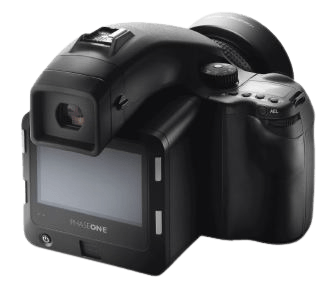Phase One IQ180 Specs and Scores

The Phase One IQ180 receives a score of 65/100 for its general specifications. Announced on January 24, 2011, and released the same year, this medium format camera was initially priced at $42,490. Measuring 153 x 128 x 184mm and weighing 1030g (2.27lbs), the IQ180’s specifications are still competitive in today’s market. While it may not be the latest model, the camera’s build and features make it a strong contender for those seeking a medium format option.
Phase One IQ180 Overview and Optics
The Phase One IQ180 receives a 71/100 score for optics. This medium format camera boasts an 80-megapixel CCD sensor, which provides impressive resolution for capturing fine details. However, its shooting speed of 0.7 frames per second falls short when compared to other modern cameras.
The camera features a Mamiya 645 AF lens mount, offering compatibility with a range of high-quality lenses. Despite this, the IQ180 does not include image stabilization, which might impact the sharpness of handheld photos. The camera’s processor is from Phase One, and its 4:3 aspect ratio is standard for medium format photography. The sensor has a DXOMARK score of 91, indicating strong performance in various lighting conditions.
The IQ180’s optics, while impressive in terms of resolution and sensor quality, lack some features that are common in today’s market. The absence of image stabilization and the slow shooting speed may limit its appeal for certain photographers, but the high-resolution sensor and compatibility with quality lenses ensure its place as a solid option for medium format photography.
Phase One IQ180 Video Performance
The Phase One IQ180 lacks video capabilities. Unlike many cameras, it does not record video. Its focus remains on high-quality still photography.
Phase One IQ180 Features and Benefits
The Phase One IQ180 feature score stands at 59/100, which may not seem outstanding, but let’s examine the specifications more closely. The camera boasts a 3.2-inch screen with a resolution of 1,150,000 dots, providing clear and sharp image previews. Additionally, the IQ180 has a touchscreen, making it user-friendly and easy to navigate.
While it lacks a flip screen, GPS, and Bluetooth, the camera does have WiFi connectivity, allowing for the seamless transfer of images from the camera to other devices. This convenience is essential for photographers in the modern world.
After considering these specifications, it’s evident that the Phase One IQ180 holds its ground in today’s market. Though some features may be missing, the camera’s high-quality touchscreen and WiFi connectivity make it a reliable choice for professional photographers.
Phase One IQ180 Storage and Battery
The Phase One IQ180 scores a 35/100 in storage and battery capacity. It has a single memory card slot, accepting only Compact Flash cards. In the current market, this limits storage options compared to cameras supporting SD or CFast cards. The IQ180’s battery life lasts for 800 shots, powered by six AA batteries. This camera lacks USB charging capabilities.
Despite its high-quality optics and features, the IQ180 falls short in storage and battery performance. Its limited memory card compatibility and reliance on AA batteries hinder its standing in today’s market. The lack of USB charging further limits its practicality for modern users.
